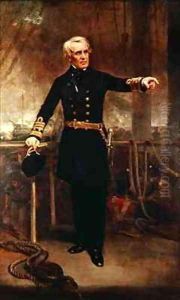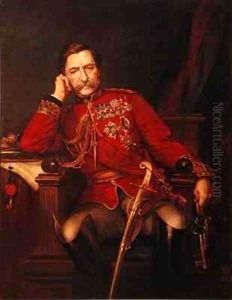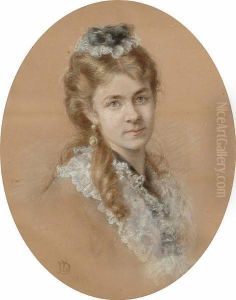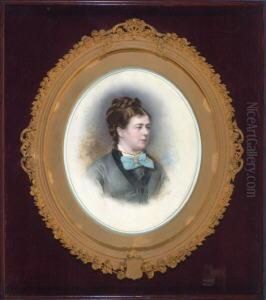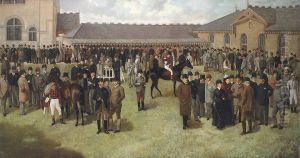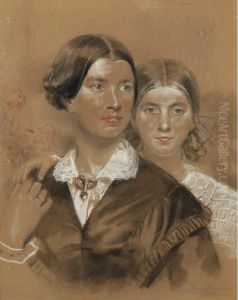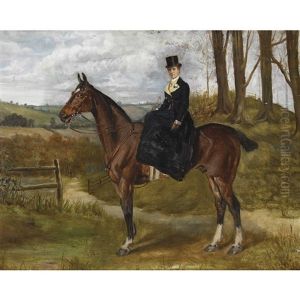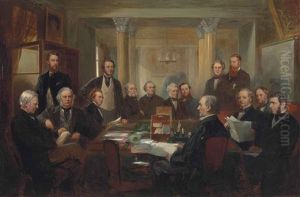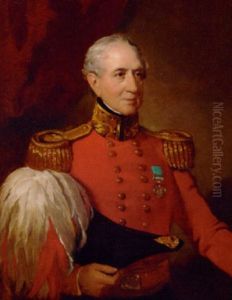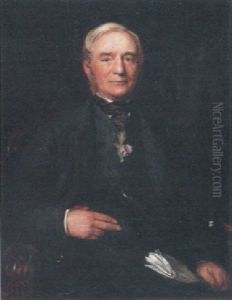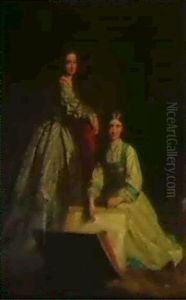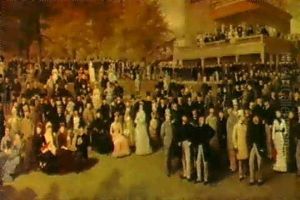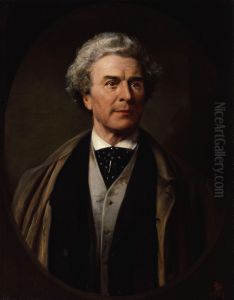Lowes Cato Dickinson Paintings
Lowes Cato Dickinson was a prominent English portrait painter and Christian socialist, born on November 8, 1819, in London. His early life was marked by a passion for art, which he pursued despite the limited formal education opportunities available to him at the time. Dickinson was largely self-taught, although he did attend the Royal Academy schools briefly. He developed a distinctive style that made him one of the most sought-after portraitists of his era, capturing the likenesses of many notable figures of the 19th century.
Throughout his career, Dickinson was known for his group portraits, often referred to as 'conversation pieces,' which included depictions of famous contemporaries in various settings. One of his most celebrated works is the group portrait of the delegates to the first meeting of the International Red Cross, showcasing his ability to capture individual personalities within a larger composition. Dickinson's approach to portraiture was not just about likeness but also about capturing the essence and character of his subjects, which set his work apart from his contemporaries.
Beyond his artistic achievements, Dickinson was deeply involved in social reform movements of his time. He was an advocate for Christian socialism, working closely with leaders of the movement such as Frederick Denison Maurice. Dickinson's commitment to social issues was not only theoretical but also practical; he was involved in the establishment of cooperative societies and educational initiatives aimed at improving the lives of the working class.
Dickinson's later years were marked by continued artistic production and social activism. He remained active in the art world, contributing to exhibitions and maintaining a prolific output of portraits. Lowes Cato Dickinson passed away on December 15, 1908, leaving behind a legacy that encapsulated not only his artistic contributions but also his commitment to social progress. His works are preserved in various collections and galleries, serving as a testament to his skill as a portraitist and his vision as a reformer.
